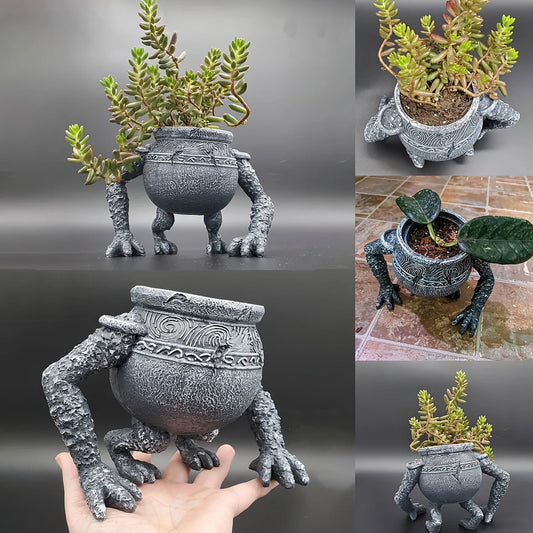Mastering Sustainable Home Gardening: Transform Your Space into a Thriving, Eco-Friendly Oasis
In an era of increasing environmental awareness, sustainable home gardening has emerged as a powerful tool for individuals to make a positive impact on the planet while reaping personal benefits. By transforming your outdoor space into a thriving, eco-friendly oasis, you can contribute to addressing critical issues such as climate change, water scarcity, and biodiversity loss. This comprehensive guide will explore the concept of sustainable home gardening, its benefits, and practical techniques to help you create a greener, more environmentally friendly living space.
Understanding Sustainable Home Gardening
Sustainable home gardening is the practice of cultivating plants in a way that minimizes environmental impact, conserves resources, and promotes biodiversity. This approach goes beyond simply growing plants; it involves creating a balanced ecosystem that works in harmony with nature.
Key Principles of Sustainable Gardening
- Resource Conservation: Minimizing water usage, energy consumption, and waste production.
- Soil Health: Maintaining and improving soil quality through natural methods.
- Biodiversity: Supporting a diverse range of plant and animal species.
- Natural Pest Management: Using eco-friendly methods to control pests and diseases.
- Native Plant Selection: Choosing plants adapted to local conditions.
Environmental Benefits
Sustainable gardening practices offer numerous environmental benefits:
- Reduced Water Usage: By implementing water-saving techniques, sustainable gardens can significantly decrease water consumption. For example, using mulch and compost can help retain soil moisture, reducing the need for frequent watering.
- Increased Biodiversity Support: Gardens that incorporate native plants and diverse species can support up to 100 times more biodiversity than conventional gardens. This increase in biodiversity helps maintain ecological balance and supports local wildlife.
- Carbon Sequestration: Sustainable gardening practices, such as composting and planting trees, can help sequester carbon from the atmosphere. This contributes to mitigating climate change on a local level.
Personal Benefits
Adopting sustainable gardening practices also offers several personal advantages:
- Improved Diet Quality: Growing your own organic fruits, vegetables, and herbs can lead to a more nutritious and diverse diet.
- Reduced Exposure to Pesticides: By using natural pest management techniques, you can minimize your exposure to harmful chemicals often found in conventional gardening products.
- Enhanced Well-being: Gardening activities have been shown to reduce stress, improve mental health, and increase physical activity levels.
Essential Sustainable Gardening Practices
To create a truly sustainable garden, it's important to implement key practices that promote environmental health and resource conservation.
Composting: The Foundation of Soil Health
Composting is a cornerstone of sustainable gardening, providing numerous benefits for soil health and plant growth.
"Compost is the best way to nurture soil and bring it back to life,"
states an expert from "A Greener Thumb: How to Practice Sustainable Gardening."
Benefits of Composting
- Improves soil structure and fertility
- Enhances water retention capacity
- Reduces the need for chemical fertilizers
- Supports beneficial microorganisms in the soil
- Helps divert organic waste from landfills
Types of Composting Methods
- Traditional Heap Composting: A simple method involving a pile of organic materials that decompose over time.
- Bin Composting: Using a container to hold and control the composting process.
- Vermicomposting: Utilizing worms to break down organic matter quickly.
- Bokashi Composting: An anaerobic process that ferments organic waste using beneficial microorganisms.
Native Plant Selection: Supporting Local Ecosystems
Choosing native plants for your garden is a crucial aspect of sustainable gardening. Native species are adapted to local conditions and provide numerous benefits:
- Lower Maintenance: Native plants generally require less water, fertilizer, and pest control.
- Support for Local Wildlife: They provide food and habitat for native insects, birds, and other animals.
- Improved Resilience: Native plants are better equipped to handle local climate conditions and resist pests.
Examples of Suitable Native Plants for Different Regions
- Northeast USA: Black-eyed Susan, Eastern Redbud, New England Aster
- Southeast USA: Purple Coneflower, American Beautyberry, Butterfly Weed
- Midwest USA: Prairie Dropseed, Smooth Blue Aster, Wild Bergamot
- Southwest USA: Desert Marigold, Texas Sage, Penstemon
- Pacific Northwest: Oregon Grape, Pacific Dogwood, Salal
Water Conservation Techniques
Efficient water use is essential in sustainable gardening. Implementing water conservation methods can significantly reduce your garden's water consumption.
Mulching
Applying a layer of organic material around plants helps retain soil moisture, suppress weeds, and regulate soil temperature. Common mulching materials include:
- Straw
- Wood chips
- Leaves
- Grass clippings
Rainwater Harvesting
Collecting and storing rainwater for garden use is an excellent way to conserve water resources. Methods include:
- Rain Barrels: Simple containers that collect water from roof downspouts.
- Cisterns: Larger storage systems for collecting and storing significant amounts of rainwater.
- Rain Gardens: Landscaped areas designed to capture and filter rainwater runoff.
Efficient Irrigation Systems
Implementing water-efficient irrigation methods can dramatically reduce water waste:
- Drip Irrigation: Delivers water directly to plant roots, minimizing evaporation.
- Soaker Hoses: Slowly release water along their length, providing deep watering with minimal runoff.
- Smart Irrigation Controllers: Adjust watering schedules based on weather conditions and plant needs.
Natural Pest Management
Sustainable gardening emphasizes natural methods for controlling pests and diseases, reducing reliance on harmful chemicals.
Integrated Pest Management (IPM) Techniques
IPM is a holistic approach to pest control that focuses on prevention and uses chemical interventions only as a last resort. Key components include:
- Prevention: Choosing resistant plant varieties and maintaining plant health.
- Monitoring: Regularly inspecting plants for signs of pests or diseases.
- Cultural Controls: Adjusting planting times, crop rotation, and sanitation practices.
- Physical Controls: Using barriers, traps, or manual removal of pests.
- Biological Controls: Introducing or encouraging natural predators of pest species.
Beneficial Insects and Their Roles
Encouraging beneficial insects in your garden can help control pest populations naturally. Some examples include:
- Ladybugs: Feed on aphids, mites, and other small pests.
- Lacewings: Consume aphids, mealybugs, and small caterpillars.
- Praying Mantises: Prey on a wide variety of garden pests.
- Parasitic Wasps: Lay eggs in or on pest insects, controlling their populations.
Organic Pest Control Methods
When intervention is necessary, consider organic pest control options:
- Neem Oil: A natural insecticide and fungicide derived from neem tree seeds.
- Diatomaceous Earth: A powder that damages the exoskeletons of many insect pests.
- Insecticidal Soaps: Effective against soft-bodied insects like aphids and mealybugs.
- Companion Planting: Growing certain plants together to repel pests or attract beneficial insects.
Designing Your Sustainable Garden
Creating a sustainable garden involves thoughtful planning and design to maximize environmental benefits and resource efficiency.
Assessing Your Space and Resources
Before starting your sustainable garden, consider:
- Climate and Microclimate: Understand your local climate conditions and any microclimates within your garden.
- Soil Type and Quality: Test your soil to determine its composition and nutrient levels.
- Sun Exposure: Map out areas of full sun, partial shade, and full shade.
- Water Availability: Assess your water sources and potential for rainwater harvesting.
- Existing Vegetation: Identify plants already present in your garden, including any invasive species.
Planning for Biodiversity
Incorporate a diverse range of plants to create a resilient ecosystem:
- Layer Your Plantings: Include trees, shrubs, and groundcovers to create vertical diversity.
- Mix Plant Types: Combine annuals, perennials, and woody plants.
- Provide Year-Round Interest: Choose plants that offer food and habitat throughout the seasons.
- Create Wildlife Corridors: Connect your garden to neighboring green spaces to facilitate wildlife movement.
Incorporating Water-Saving Features
Design your garden with water conservation in mind:
- Contour the Land: Create swales and berms to capture and direct water flow.
- Group Plants by Water Needs: Place water-hungry plants together to optimize irrigation.
- Install Permeable Surfaces: Use materials like gravel or permeable pavers for pathways to allow water infiltration.
- Incorporate Rain Gardens: Design areas to capture and filter stormwater runoff.
Creating Wildlife-Friendly Areas
Encourage biodiversity by providing habitats for various species:
- Install Water Features: Bird baths, ponds, or fountains can attract and support wildlife.
- Create Brush Piles: Provide shelter for small animals and insects.
- Leave Some Areas Undisturbed: Allow leaf litter and fallen branches to accumulate in certain areas.
- Plant Pollinator-Friendly Species: Choose flowers that attract bees, butterflies, and other pollinators.
How To Start Your Sustainable Garden
Follow these steps to create your own sustainable garden:
Step 1: Assess Your Garden Space and Set Goals
- Evaluate your garden's climate, soil type, and existing plants.
- Determine your gardening goals (e.g., growing food, supporting wildlife, conserving water).
- Create a rough sketch of your garden layout.
Step 2: Start Composting
- Choose a composting method suitable for your space (e.g., bin, heap, vermicomposting).
- Begin collecting kitchen scraps and yard waste.
- Maintain a balance of green (nitrogen-rich) and brown (carbon-rich) materials.
- Turn your compost regularly to ensure proper decomposition.
Step 3: Select and Plant Native Species
- Research native plants suitable for your region and garden conditions.
- Choose a variety of plants to support biodiversity.
- Prepare planting areas by improving soil with compost.
- Plant according to each species' specific needs (e.g., sun exposure, soil moisture).
Step 4: Implement Water Conservation Methods
- Install rain barrels or a rainwater harvesting system.
- Apply mulch around plants to retain soil moisture.
- Set up efficient irrigation systems like drip lines or soaker hoses.
- Group plants with similar water needs together.
Step 5: Establish Natural Pest Management Systems
- Create habitats for beneficial insects and animals.
- Implement companion planting strategies.
- Use physical barriers like row covers to protect plants from pests.
- Prepare organic pest control solutions for use when needed.
Step 6: Maintain and Monitor Your Garden
- Regularly inspect plants for signs of pests or diseases.
- Prune and maintain plants as needed to promote healthy growth.
- Continue adding to your compost and using it to enrich your soil.
- Adjust your gardening practices based on observations and results.
Common Mistakes to Avoid
- Overwatering: This can lead to root rot and encourage fungal diseases.
- Improper Plant Spacing: Crowding plants can increase competition for resources and promote disease.
- Neglecting Soil Health: Failing to maintain soil quality can lead to poor plant growth and increased pest problems.
- Using Chemical Pesticides: These can harm beneficial insects and disrupt the garden's ecosystem.
- Ignoring Local Conditions: Choosing plants unsuited to your climate or soil type can result in high maintenance and poor performance.
Tips for Success
- Start Small: Begin with a manageable area and expand as you gain experience.
- Keep a Garden Journal: Record your observations, successes, and challenges to inform future decisions.
- Embrace Imperfection: A sustainable garden may look less manicured than a conventional one, but it's healthier for the environment.
- Connect with Local Gardeners: Join gardening groups or online forums to share knowledge and resources.
- Be Patient: Sustainable gardening is a long-term process; it takes time for ecosystems to establish and thrive.
Overcoming Challenges in Sustainable Gardening
While sustainable gardening offers numerous benefits, it also comes with its own set of challenges. Here are some common issues and solutions:
Limited Space Solutions
For gardeners with small yards or urban environments:
- Vertical Gardening: Utilize walls, fences, and trellises to grow climbing plants.
- Container Gardening: Use pots, raised beds, or even repurposed items like pallets.
- Intensive Planting: Maximize space by interplanting compatible species.
- Rooftop or Balcony Gardens: Transform unused spaces into green areas.
Dealing with Poor Soil Quality
If your soil is less than ideal:
- Soil Testing: Conduct a thorough soil analysis to understand its composition and needs.
- Amending Soil: Add organic matter like compost to improve soil structure and fertility.
- Cover Cropping: Plant cover crops to improve soil health between growing seasons.
- No-Till Methods: Minimize soil disturbance to preserve soil structure and beneficial organisms.
Managing Pests Naturally
When faced with persistent pest problems:
- Crop Rotation: Change the location of plant families each year to disrupt pest cycles.
- Trap Crops: Plant species that attract pests away from your main crops.
- Beneficial Habitats: Create areas that attract natural predators of common pests.
- Physical Barriers: Use row covers or netting to protect plants from pests.
Adapting to Local Climate Conditions
To garden sustainably in challenging climates:
- Microclimates: Identify and utilize areas with unique conditions within your garden.
- Season Extension: Use techniques like cold frames or hoop houses to extend the growing season.
- Drought-Tolerant Landscaping: In arid regions, focus on xeriscaping principles.
- Wind Protection: Create windbreaks using trees, shrubs, or structures in windy areas.
Trends and Innovations in Sustainable Gardening
The field of sustainable gardening is constantly evolving, with new techniques and technologies emerging to address environmental challenges.
Vertical Gardening Techniques
Vertical gardening is gaining popularity, especially in urban areas:
- Living Walls: Large-scale vertical plantings on building facades or interior walls.
- Modular Systems: Pre-fabricated panels or pockets for easy installation and maintenance.
- Hydroponic Vertical Gardens: Soil-less systems that use nutrient-rich water to grow plants vertically.
Smart Irrigation Systems
Technology is revolutionizing water management in gardens:
- Weather-Based Controllers: Adjust watering schedules based on local weather data.
- Soil Moisture Sensors: Provide real-time data on soil moisture levels to optimize watering.
- Smart Sprinkler Systems: Can be controlled remotely via smartphone apps.
- Precision Irrigation: Uses GPS and sensor technology to deliver water exactly where and when it's needed.
Regenerative Gardening Practices
Going beyond sustainability to actively improve ecosystems:
- No-Dig Gardening: Minimizes soil disturbance to preserve soil structure and biodiversity.
- Polyculture: Growing multiple crop species together to mimic natural ecosystems.
- Biochar Application: Adding charcoal to soil to improve fertility and sequester carbon.
- Permaculture Design: Creating self-sustaining garden ecosystems based on natural patterns.
Community Gardening Initiatives
Collaborative approaches to sustainable gardening are on the rise:
- Neighborhood Garden Sharing: Residents share garden spaces and resources.
- Community Supported Agriculture (CSA): Local farmers partner with community members to share harvests.
- Urban Food Forests: Public spaces planted with edible landscapes for community use.
- Seed Libraries: Community-run collections of seeds for sharing and preserving plant diversity.
Comparing Gardening Approaches
To better understand the benefits of sustainable gardening, let's compare it with other gardening approaches:
| Aspect | Sustainable Gardening | Regenerative Gardening | Conventional Gardening |
|---|---|---|---|
| Goal | Maintain ecosystem health | Improve ecosystem health | Maximize yield |
| Methods | Composting, native plants, water conservation | Composting, cover cropping, no-till practices | Synthetic fertilizers, pesticides |
| Impact | Conserves resources, supports biodiversity | Enhances biodiversity, improves soil health | High environmental impact, soil degradation |
| Long-term Focus | Emphasizes long-term sustainability | Focuses on continuous improvement | Often prioritizes short-term results |
| Resource Use | Minimizes external inputs | Aims to be self-sustaining | Often relies heavily on external inputs |
| Soil Management | Builds healthy soil over time | Actively regenerates soil health | May deplete soil over time |
Ethical Considerations and Best Practices
As sustainable gardening gains popularity, it's important to consider the ethical implications and adhere to best practices that promote responsible resource use and support local ecosystems.
Responsible Resource Use
-
Water Conservation: Use water efficiently and responsibly, especially in drought-prone areas.
- Install rainwater harvesting systems to reduce reliance on municipal water supplies.
- Choose drought-tolerant plants that require less water.
- Water plants early in the morning or late in the evening to minimize evaporation.
-
Soil Stewardship: Maintain and improve soil health without depleting resources.
- Use organic matter from your own garden or local sources for composting.
- Avoid over-tilling, which can damage soil structure and biodiversity.
- Practice crop rotation to prevent soil nutrient depletion.
-
Energy Efficiency: Minimize the use of fossil fuels in garden maintenance.
- Use hand tools when possible instead of power equipment.
- If using power tools, opt for electric models and charge them with renewable energy if available.
- Plan garden layouts to reduce the need for frequent maintenance.
Supporting Local Ecosystems
-
Native Plant Preservation: Prioritize the use of native species in your garden.
- Research plants native to your specific region or bioregion.
- Preserve existing native plants when developing your garden.
- Consider creating a native plant sanctuary within your garden space.
-
Wildlife Habitat Creation: Design your garden to support local fauna.
- Provide food sources through native plants that produce berries, seeds, or nectar.
- Create water features like bird baths or small ponds for wildlife.
- Leave some areas of your garden undisturbed as shelter for small animals and insects.
-
Invasive Species Management: Be vigilant about preventing the spread of invasive plants.
- Remove any known invasive species from your garden.
- Avoid introducing non-native plants that have the potential to become invasive.
- Educate yourself about invasive species in your area and report sightings to local authorities.
Sharing Knowledge and Resources with the Community
-
Community Education: Share your sustainable gardening knowledge with others.
- Offer to give talks at local gardening clubs or community centers.
- Start a blog or social media account to share your gardening journey and tips.
- Participate in local garden tours to showcase sustainable practices.
-
Seed and Plant Sharing: Promote biodiversity by sharing plants and seeds.
- Organize or participate in seed swaps with other gardeners.
- Donate excess plants to community gardens or schools.
- Start a neighborhood plant exchange program.
-
Collaborative Projects: Engage in community-wide sustainable gardening initiatives.
- Volunteer for or initiate community garden projects.
- Participate in citizen science projects related to gardening and biodiversity.
- Collaborate with local schools to create educational gardens.
Success Stories and Case Studies
Case Study: Missouri Botanical Garden's Sustainable Practices
The Missouri Botanical Garden (M BG) has been a leader in promoting sustainable gardening practices for decades. Their approach serves as an excellent example for home gardeners looking to implement sustainable techniques.
Key Sustainable Practices at MBG:
- Water Conservation: The garden has implemented extensive rainwater harvesting systems, collecting millions of gallons of rainwater annually for irrigation.
- Native Plant Focus: MBG maintains several native plant gardens, showcasing the beauty and ecological benefits of local species.
- Composting Program: The garden composts all plant waste on-site, producing rich organic matter for soil improvement.
- Integrated Pest Management: MBG uses a comprehensive IPM program, minimizing chemical interventions and promoting natural pest control methods.
- Education and Outreach: The garden offers numerous educational programs and resources on sustainable gardening for the public.
Results:
- Reduced water consumption by over 50% in maintained areas
- Increased biodiversity, with over 800 native plant species represented
- Significant reduction in chemical pesticide use
- Served as a model for other botanical gardens and home gardeners nationwide
Personal Success Story: Suburban Garden Transformation
Sarah Thompson, a homeowner in suburban Chicago, transformed her conventional lawn into a thriving, sustainable garden over the course of three years.
Initial Challenges:
- High water usage for lawn maintenance
- Poor soil quality due to years of chemical fertilizer use
- Lack of biodiversity and wildlife in the yard
Sustainable Solutions Implemented:
- Removed 50% of the lawn and replaced it with native prairie plants and vegetable gardens
- Installed a 500-gallon rainwater harvesting system
- Started composting all household organic waste
- Implemented natural pest control methods, including companion planting and beneficial insect habitats
- Created a small pond to support local wildlife
Results After Three Years:
- Water usage reduced by 65% compared to previous lawn maintenance
- Soil quality significantly improved, as evidenced by earthworm population increase and better water retention
- Biodiversity increased dramatically, with regular sightings of birds, butterflies, and beneficial insects
- Annual vegetable yield of over 300 pounds, reducing grocery bills and carbon footprint
- Inspired five neighboring households to start their own sustainable garden projects
Sarah's success demonstrates that even in suburban settings, significant environmental improvements can be achieved through sustainable gardening practices.
FAQ Section
Q1: What's the best way to start a sustainable garden?
A: The best way to start a sustainable garden is to begin with a thorough assessment of your space and resources. Follow these steps:
- Analyze your soil quality through testing.
- Assess sunlight exposure and microclimates in your garden.
- Start a compost system to improve soil health.
- Choose native plants adapted to your local climate.
- Implement water conservation methods like mulching and rainwater harvesting.
- Plan for biodiversity by including a variety of plant types.
- Begin with a small area and expand gradually as you gain experience.
Remember, sustainable gardening is a journey. Start small, learn from your experiences, and gradually implement more sustainable practices over time.
Q2: How can I conserve water in the garden?
A: Water conservation is crucial in sustainable gardening. Here are effective methods to reduce water usage:
- Mulching: Apply a 2-3 inch layer of organic mulch around plants to retain soil moisture and reduce evaporation.
- Rainwater Harvesting: Install rain barrels or cisterns to collect rainwater from your roof for garden use.
- Efficient Irrigation: Use drip irrigation or soaker hoses instead of sprinklers to deliver water directly to plant roots.
- Proper Watering Timing: Water early in the morning or late in the evening to minimize evaporation.
- Grouping Plants: Arrange plants with similar water needs together to avoid overwatering.
- Choosing Drought-Tolerant Plants: Select native or adapted species that require less water.
- Reducing Lawn Area: Replace water-hungry lawns with drought-tolerant groundcovers or native plant gardens.
- Using Gray Water: Reuse household water from sinks or showers for garden irrigation (where legally permitted).
By implementing these methods, you can significantly reduce your garden's water consumption while maintaining plant health.
Q3: What are the benefits of composting?
A: Composting offers numerous benefits for both your garden and the environment:
- Soil Improvement: Compost enhances soil structure, improves water retention, and increases nutrient content.
- Waste Reduction: It diverts organic waste from landfills, reducing methane emissions.
- Natural Fertilizer: Compost provides a slow-release, nutrient-rich fertilizer for plants.
- Beneficial Microorganisms: It promotes the growth of beneficial soil microbes, enhancing plant health.
- pH Regulation: Compost helps balance soil pH, making it suitable for a wider range of plants.
- Pest and Disease Resistance: Plants grown in compost-rich soil are often more resistant to pests and diseases.
- Water Conservation: Compost-enriched soil retains moisture better, reducing the need for frequent watering.
- Cost Savings: It reduces the need for commercial fertilizers and soil amendments.
- Carbon Sequestration: Composting helps sequester carbon in the soil, contributing to climate change mitigation.
By composting, you're not only improving your garden but also contributing to broader environmental sustainability.
Q4: How can I manage pests sustainably?
A: Sustainable pest management focuses on prevention and natural control methods. Here are effective strategies:
-
Integrated Pest Management (IPM):
- Monitor your garden regularly for pest issues.
- Identify pests correctly before taking action.
- Use a combination of control methods, starting with the least harmful.
-
Cultural Controls:
- Choose pest-resistant plant varieties.
- Practice crop rotation to disrupt pest life cycles.
- Maintain plant health through proper watering and fertilization.
-
Physical Controls:
- Use barriers like row covers or netting to protect plants.
- Hand-pick larger pests like caterpillars and beetles.
- Use sticky traps for flying insects.
-
Biological Controls:
- Encourage beneficial insects like ladybugs and lacewings.
- Use microbial pesticides like Bacillus thuringiensis (Bt) for specific pests.
- Introduce predatory nematodes for soil-dwelling pests.
-
Companion Planting:
- Plant pest-repelling herbs like basil, mint, or marigolds near vulnerable crops.
-
Organic Pesticides:
- Use as a last resort and choose products like neem oil or insecticidal soaps.
- Apply selectively and follow instructions carefully.
-
Healthy Ecosystem:
- Create biodiversity in your garden to naturally balance pest populations.
- Provide habitats for birds and beneficial insects.
Remember, the goal is to manage pests at acceptable levels, not to eliminate them entirely. A few pests can actually contribute to a healthy garden ecosystem.
Q5: What are some recommended sustainable gardening tools?
A: Sustainable gardening tools should be durable, energy-efficient, and ideally made from sustainable materials. Here are some recommended tools:
-
Hand Tools:
- Stainless steel hand trowel and fork
- Wooden-handled hoe and rake
- Pruning shears with replaceable blades
-
Composting Tools:
- Compost bin or tumbler
- Compost thermometer
- Aeration tool or compost turner
-
Water Conservation Tools:
- Rain barrels or cisterns
- Drip irrigation kit
- Soaker hoses
- Moisture meter
-
Mulching and Soil Care:
- Wheelbarrow (preferably with a puncture-proof tire)
- Mulch fork
- Soil sieve
-
Pest Management:
- Insect nets
- Row covers
- Diatomaceous earth applicator
-
Energy-Efficient Power Tools:
- Electric or battery-powered lawn mower
- Cordless hedge trimmer
- Solar-powered garden lights
-
Seed Starting:
- Biodegradable seed starting pots
- Heat mat for germination
- LED grow lights
-
Miscellaneous:
- Reusable garden ties or twine
- Bamboo or metal plant stakes
- Garden journal for record-keeping
When choosing tools, look for those made from sustainable materials like FSC-certified wood, recycled plastics, or durable metals. Opt for tools that can be repaired rather than replaced, and consider sharing infrequently used tools with neighbors or community gardens to maximize resource efficiency.
Tools, Equipment, and Resources
Essential Tools for Sustainable Gardening
-
Composting Equipment:
- Compost bin or tumbler
- Compost thermometer
- Compost aerator or fork
-
Water Conservation Tools:
- Rain barrels or cisterns
- Drip irrigation system
- Soaker hoses
- Moisture meter
-
Soil Care Tools:
- Hand trowel and fork
- Broadfork for aeration
- Soil testing kit
-
Mulching Tools:
- Wheelbarrow
- Mulch fork
- Leaf rake
-
Pruning and Maintenance:
- Pruning shears
- Loppers
- Hand saw
-
Pest Management:
- Insect netting
- Row covers
- Organic pest control sprayer
-
Seed Starting:
- Biodegradable seed trays
- Heat mat
- Grow lights
-
Energy-Efficient Power Tools:
- Electric or battery-powered lawn mower
- Cordless hedge trimmer
Recommended Books and Online Resources
-
Books:
- "Gaia's Garden: A Guide to Home-Scale Permaculture" by Toby Hemenway
- "The Vegetable Gardener's Bible" by Edward C. Smith
- "Bringing Nature Home" by Douglas W. Tallamy
- "Teaming with Microbes" by Jeff Lowenfels and Wayne Lewis
- "The New





































































